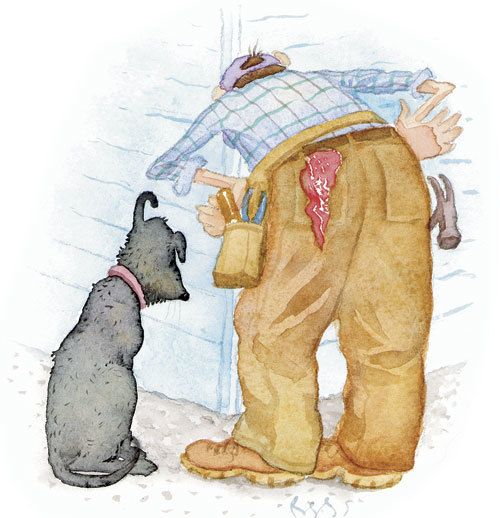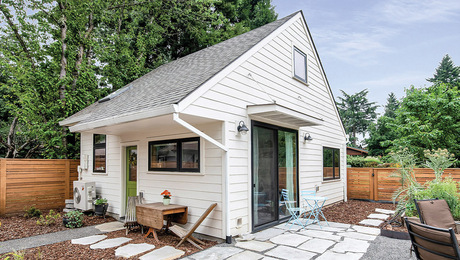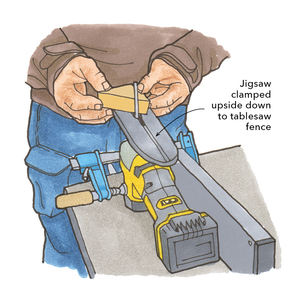
By far one of the most exasperating situations I’ve ever dealt with was under a metal roof I installed several years ago. The signs of a leak started to show up on the ground near where the corner of the two-story section of the house penetrated the roof of a one-story wing. I was surprised to get the callback. But a leaky roof is a leaky roof, no matter what kind or who installed it.
The homeowner met me in the driveway, introduced me to his new dog so that I wouldn’t be bitten or yapped at continually and showed me the area. Sure enough, the ground was wet just at that one spot; none of the similarly constructed areas was damp. That spot was adjacent to 4 ft. of dry ground in three directions, so windblown rain was not a factor. On the roof, everything seemed normal. Roofing panels were in place. End-wall and sidewall flashings were lapped correctly. The flashings were tucked under and behind the second-story wood siding. So I squirted a dab or two of caulk, petted the dog and left.
The next time it rained, I was called back. Same place. I inspected the flashings and panels 10 ft. sideways and all the way to the ridge. I could not find any mistakes, mislaps or missing caulk. No screw holes or pin holes in the panels. I carefully reported my puzzlement to the dog and left.
I stopped several times in the next few weeks. Although my attempts to solve the mystery were futile, the dog and I became friends. But my pride was really suffering.
Finally, the first big clue came. After several days of rain, I stopped and noticed that the larger-than-usual amount of water was slightly discolored, just as stagnant gutter water turns brown from leaves soaking in it. I deduced that the water was turning brown from the wood siding. I checked the upper roof, tore off all the corner trim boards of the second story between the lower and upper roofs and caulked every joint, crack, split, knot and nail hole before replacing them. Water had to have been getting behind the corner trim boards way up high, seeping down past the ends of the siding boards, oozing behind the lower roof flashing and finally emerging just above ground level. I sealed that trim up tight.
Next rain, it leaked.
Then came the final clue. One day, I was passing by just as a rain and hail shower started. I turned in to the driveway and checked the leaky spot. To my amazement, the drip in that aggravating corner was not cold like the hail-cooled rain but slightly warm. Obviously, the cold rain had warmed up enough flowing across the hot flashings that it had not cooled off completely as it seeped through the hidden passages. The passage had to be more direct and/or shorter and/or of a closer origin than I had been looking for.
I plunked myself down in a lawn chair where I could survey the whole situation, scratched the dog’s ear and methodically explained everything I observed and suspected and had done. Blackie patiently listened to my whole story of woe, bewilderment and frustration.
Then he walked over to that corner and lifted his leg.
—John Fink, Grand Ronde, OR
Drawing by: Jackie Rogers
Fine Homebuilding Recommended Products
Fine Homebuilding receives a commission for items purchased through links on this site, including Amazon Associates and other affiliate advertising programs.

8067 All-Weather Flashing Tape

Handy Heat Gun

Reliable Crimp Connectors





















